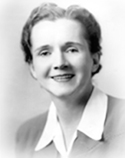Conservation History
The National Conservation Training Center Museum and Archives houses films, photos, and documents chronicling the rich heritage of wildlife conservation. A changing museum and state of the art research archive help the public, researchers and professional conervationists better understand the rich history of American wildlife conservation.
Conservation History Films from the NCTC Archives
Theodore Roosevelt's Oyster Bay, New York, estate -- Sagamore Hill National Historic Site -- is the subject of a new video produced by the National Conservation Training Center for the National Park Service. It will be used to acquaint visitors with limited mobility to the fascinating objects and artifacts in this Victorian-era mansion from the remarkable life of Theodore Roosevelt, America's 26th president; when Sagamore Hill is temporarily closed to the public during upcoming renovations, the video will serve as a visual window into this treasure trove of presidential and family mementos, hunting trophies from Africa and the American West, and works of art and great literature. The video was shot by former NCTC videographer David Cooper and scripted by writer-editor David Klinger, with post-production work by Shepherdstown's Robert Owens and his Eagle Rock Productions, and technical assistance from Fish and Wildlife Service national historian Dr. Mark Madison.
History comes alive as authors, scientists, and historians talk about conservation history.
Gobbledygook Has Got to Go

Ask the Historian




